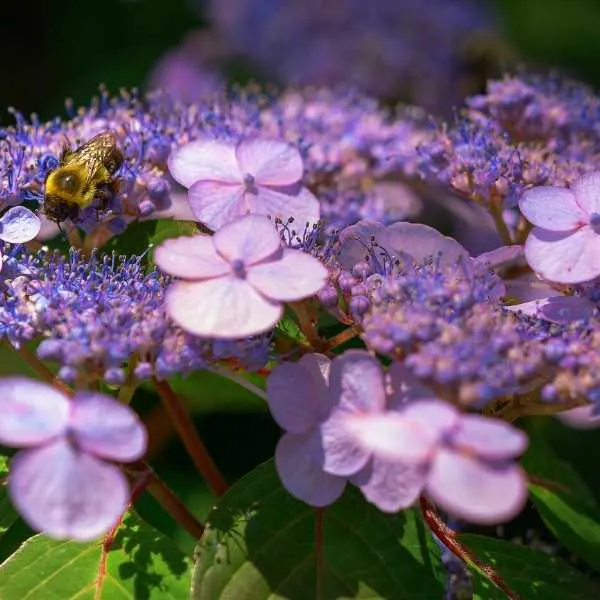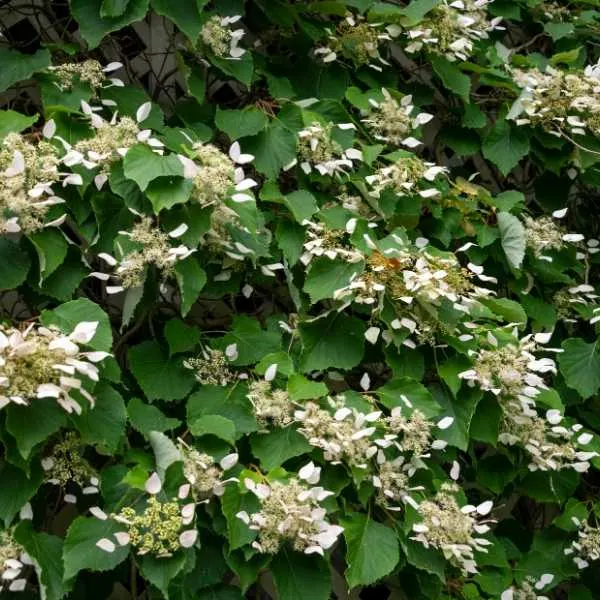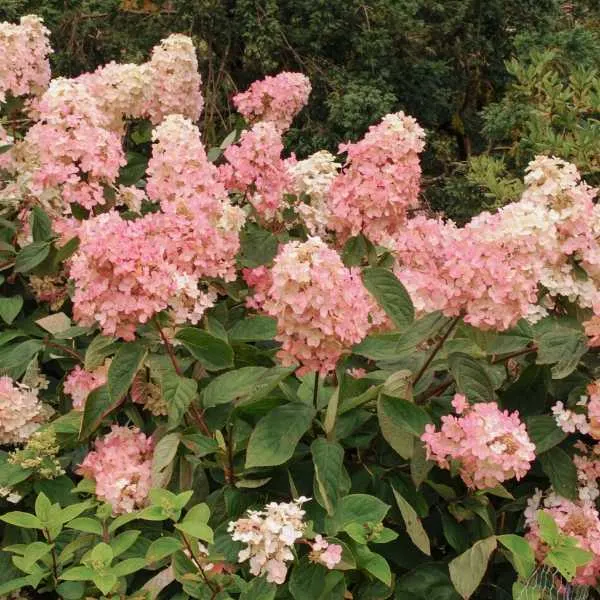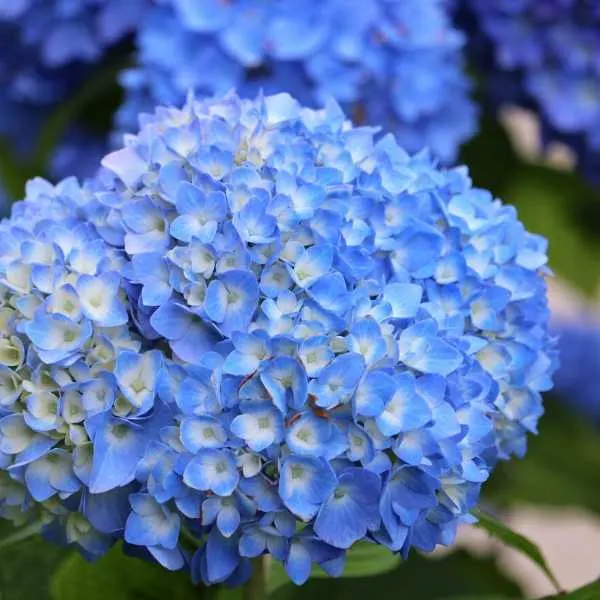Tips on Growing Hydrangeas – How to Grow and Care for Hydrangea Flowers
Are you ready to learn how to grow hydrangeas in your garden? When it comes to adding these beautiful flowers to your landscaping and garden area, there are some very simple tips that you can easily do to help them thrive and grow.
Adding hydrangeas to your yard or garden area is a super simple way to add curb appeal and beauty quickly.
Below we’ll outline some of the most important steps and questions that you need to know the answers to for growing hydrangeas in your yard.

Related Article:
What Type of Flower is a Hydrangea?
It’s a decorative flower that is planted for its ease of growth and large beautiful flowers. Hydrangeas are one of the flowers that symbolize congratulations.
Many yards will have these types of plants planted because they add such a fun look and pop of color. It is also one of the best privacy plants for your balcony.
(You may also want to learn how to change hydrangea colors here).
Do Hydrangeas Come Back Every Year?
Yes, they do. This is why they’re one of the more popular planting choices.
Once you plant them and get them to start growing, they should come back every year without hardly any effort or time from you.
Is Hydrangea an Annual or Perennial?
Since hydrangeas come back on their own every single year, they would be considered a perennial plant.
There are actually many perennial plants that you can sprinkle throughout your garden to grow back each year on their own.
Do Hydrangeas Need a Lot of Water?
During the peak of their growing season, you can figure that they’ll need about an inch or so of water every week.
Besides that, they should be fine to get any extra water from the rain.
If you feel that it needs a tad bit more, use your best judgment.
How Many Hours of Sun Do Hydrangeas Need?
Hydrangeas like the sun and need it to grow. Make certain that you plant your plants somewhere that they’ll get about 6 hours of sunlight every single day.
Otherwise, you’ll be setting them up to not grow as well as they could, or possibly not at all.
What Month Do You Prune Hydrangeas?
This all just depends on when the plant is growing. Pruning it during the winter months will help it to be ready for growth during the next season.
But if you notice that it needs a pruning once it starts to bloom, you can prune it during the spring as well.
Types of Hydrangeas
If you Google to see how many types of hydrangeas there are, you might actually find out some sources report up to 80 different varieties!
And while that might seem like a lot, there are really 6 main ones that you need to be aware of.
Hydrangea Arborescens

If you’re wanting one that blooms pink or white, this is the one for you. It’s also going to have a bloom time from summer to early fall as well.
Hydrangea Quercifolia (Oakleaf)

You’ll see these bloom in the color purple and are great for planting during the month of July, all the way up to September. This type can be found growing in the woods as well.
Hydrangea Serrata (Mountain Hydrangeas)

You’ll find that this type of hydrangea doesn’t grow quite as big as some of the other options.
So if you’re looking for one that you can plant in a pot on the porch or the side of the house, this might be the best choice for you.
Hydrangea Anomala ssp. Petiolaris (Climbing Hydrangea)

This plant will grow tall and be quite huge! If you can get it to grow upwards on a trellis, you can have it look like it’s wrapping or climbing up the wall of your house!
Hydrangea Paniculata

You might say that this is probably the one that most people are familiar with because it has that distinctive cone look to it and blooms quite beautifully in yards.
Hydrangea Macrophylla (Mophead)

This plant is quite a mystery as you might not really know what color it’s going to bloom.
The color of the flowers depends on the soil in the area so some might be blue, white, purple, etc.
Planting Hydrangea Plant
Growing Hydrangeas successfully starts with planting. And you need to plant at the right time, right location and in healthy soil to get the best results.
Where to Plant Hydrangeas
Hydrangeas thrive best in partial moist and well drained organic rich soil.
They need sunlight to thrive. So choose a place that gets sun in the morning and afternoon, but has shade in the late afternoon to prevent wilting and bleached leave in hot summer temperature.
The chosen area for planting hydrangeas should also be protected from strong winds.
Add organic matter (compost) to your garden soil if it is of poor quality.
When to Plant Hydrangea
You can plant this perennial flower plant in the spring or fall.
How to Plant Hydrangea
Prepare the soil by adding organic matter if necessary.
Plant in a hole that is as deep as the root bulb and 2-3 times as wide to give the roots enough room to expand. Leave space of 3-8 inches between plants.
Be sure to loosen the roots before planting. Fill up the hole with soil and water very well.
How to Plant Hydrangea in Pots
You will need to use potting mix instead of garden soil when planting hydrangea in pots.
Use pots that have drainage holes and are large enough to allow the plant grow.
Make room for watering by leaving 2-3 inches between the top soil and the rim of the pot.
Hydrangea Care and Pruning
How to Water Hydrangea Plant
Hydrangeas thrive in moist but not wet soil, so make sure you water them well without overdoing it. You can add mulch to keep the soil moist.
It is important to water immediately after planting.
Pruning Hydrangeas
How and when you prune depends on the type of hydrangea you are growing.
Most of them don’t really need major pruning other than removing dead stems and old flowers to keep the plant tidy.
Why is My Hydrangea not Blooming?
There are several factors that can cause your hydrangea to not bloom. It could be that you mistakenly removed a stem that would have bloomed or that you pruned at the wrong time.
It could also be that it’s not getting enough sunlight or that frost may have damaged the flower buds. Another factor is over-fertilization.
Hydrangeas Pests & Diseases
While there can be many pests that will attack these plants, two of the biggest offenders tend to be snails and slugs.
You’ll also know if you have issues with pests on your plants because they’ll start to eat holes in the leaves.
If you notice this, it’s time to try and identify what the problem is and see how you can fix it.
Acting quickly before the pests spread and take over is key.
What Does a Diseased Hydrangea Look Like?
If you think that you might have a diseased hydrangea plant, you’ll want to look at the leaves to be certain.
Cercospora is a type of disease that produces leaf spots on the bottom of the leaves that are often purple or brown in color.
You can try to stop this disease from happening by not watering the leaves whenever you’re watering the plant.
Try to water at the base of the plant instead.
Now that you know how to grow hydrangeas, it’s time to decide what variety you’re going to plant and make it happen! They’ll bloom and help make your yard look amazing and beautiful!
Did you find the tips on how to grow hydrangeas helpful?

